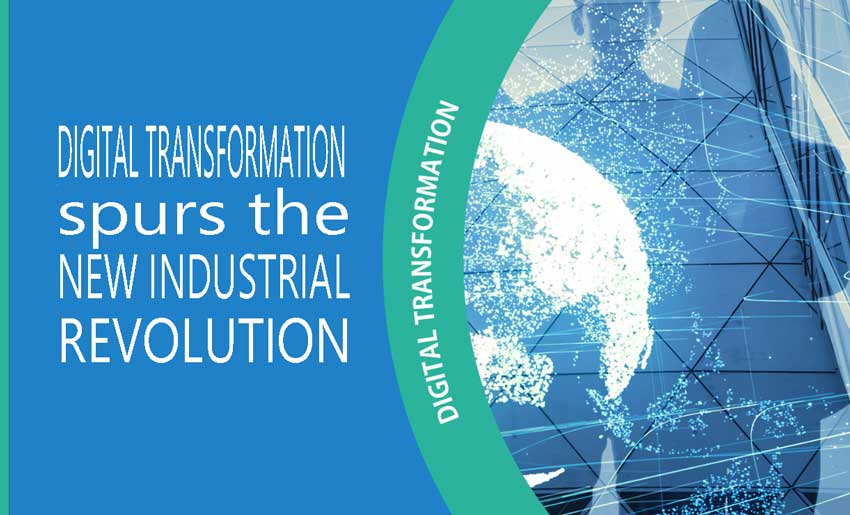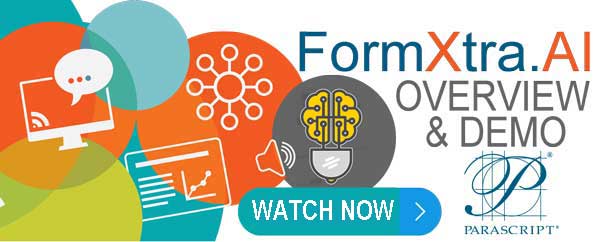Three Best Practices for Realizing DX
Innovations in artificial intelligence, machine learning and process automation promise to change how we live and work. From SIRI to self-driving cars, artificial intelligence is progressing rapidly. And while science fiction often portrays machine learning and AI as a future with smart robots with human characteristics, the truth is that these technologies are already at work fueling important changes in the way business is conducted every day.
Opportunity for Transformation
According to a 2018 AIIM Industry Watch report called “Digitalizing” Core Business Processes, research found that 75% of the organizations surveyed view digital transformation as “important” or “very important” to their organization. How do organizations put that desire into practice? Respondents say that operational savings fuel the transformation journey in core processes finance, human resources and claims processing. And while back-end operations are seen as prime targets for digital process improvement, extended benefits in customer-facing activities like improving and automating customer correspondence, on-boarding and case management are also driving digital transformation.
The Process Automation Advantage
We are at the beginning of the next wave of an industrial revolution driven by artificial intelligence and process automation. More and more, innovation is less about getting rid of paper and increasingly focused on automating and improving activities that directly influence the experience customers have when interacting with the company. Business at the pace of paper is no longer acceptable to today’s customers who are accustomed to a seamless, frictionless and almost entirely digital experience.
Where can you find immediate benefit? According to the AIIM study, organizations are adopting techniques to digitize processes in these common areas:
Application reviews and approvals (48%) – If customers find that enlisting your services is a pain, they’ll simply go somewhere else. As a result, improving and automating application reviews and new client onboarding is an important area where organizations can find immediate benefit by employing digital transformation techniques using artificial intelligence and machine learning. By automatically extracting key data, eliminating manual busywork, and making information more quickly and seamlessly available, organizations can immediately boost the experience of customers while saving money doing so.
HR processes (36%) – Every organization has a human resource function. Yet despite the increasing digitization of businesses today, the HR process in most companies remains burdened with paper-based inefficiencies and administrative work. As a result, HR is often regarded as a cost center, not a value center of the organization. Automating things like new employee onboarding, performance review approval and regulatory compliance make a difference not only by saving money, but perhaps more importantly, by freeing up HR professionals to perform activities that add value to the organization rather than simply “pushing paper.”
Finance (29%) – One process at the heart of every organization is finance. As with HR, financial activities like accounts payable continue to operate with clerks manually entering data and shuffling around stacks of printouts. Digital transformation is changing all that. According to a study from AIIM, “Finance and Accounting in 2017: Automating Core Information Workflows,” organizations that automate gain measurable improvements: 45% say better process monitoring is a top benefit, and 44% cite better records for audit trail or litigation as a major advantage. Best of all, 22% of the organizations report reductions in cost of 25% to 50% by automating.
Best Practices
What steps should you take to take advantage of digital transformation in your organization? Here are three best practices to consider:
- Modernize Your Information Infrastructure – Modernizing your information infrastructure is an important first step that includes assessing the current state, developing a set of goals and business requirements to leverage process automation, and implementing changes to connect and consolidate content repositories, extend information and process accessibility, and increase operational effectiveness.
- Digitize Core Compliance and Governance Processes – The next step is to identify processes that will be best suited to digital transformation. How can tools like advanced data capture and process automation work to reduce or eliminate paper-based and manual activities that slow the process and expose the organization to inefficiencies and risk. And then, apply business rules and technology to automate the identification and classification of information, access controls and keyword and full-text search.
- Leverage Analytics and Machine Learning – When it comes to digital transformation it is important that organizations look further than simply a scan and store approach. For many, “digitization” tends to imply scanning a piece of paper and filing away an image file instead. However, you could be entirely paperless but still miss the broader opportunity to leverage information in a way that is increasingly more beneficial to the performance of your organization. Work to utilize in-bound data capture for more than just indexing data for the image. This is at the heart of business intelligence and more expansive information governance.
Moving Forward
Is digital transformation just about automation or something else? The recommendations from AIIM along with the attitudes reflected in their study suggest that there is a realization that it is not just about automation or even technology refreshes. Instead, it is about process transformation with the focus on a holistic approach both within and outside the organization. Transformations must emphasize improved customer experience, improvement of visibility into processes themselves and where these processes can be optimized, and doing all of this more efficiently.
What can you do to move forward? Establish a firm view of what innovations and opportunities mean the most to you. Also, look for innovative digital partners with the right mix of expertise, capability and vision to help you make the most of digital transformation.
###
Guest contributor Kevin Craine is the author of the book Designing a Document Strategy and host of AIIM On Air, the podcast for AIIM International. He was named the #1 ECM Influencer to follow on Twitter. Find him at CraineGroup.com.
>>If you found this article interesting, you might find our webinar on digital transformation useful:
>>Watch our webinar, now available on-demand: FormXtra.AI Overview with Demo:






